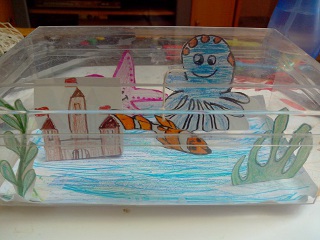How to potty train a toddler?

Potty training is a milestone that parents perhaps look forward to most. Who doesn’t want to say goodbye to those diapers which are not only messy but also heavy on pocket. There are many ways to potty train a baby and different approaches work for different kids. Even in a single family, what worked for elder kid may not work for the sibling.
In India, it is common to try and train children as early as 1 year or even earlier. I too got this advice around 1 year and we diligently tried various ways which were suggested.
- We tried taking her to washroom every hour.
- We made her sit on the potty seat. We used the trainer potty seat which can be used to reduce the adult toilet seat. She took to it easily.
- We made “shhhh” sounds as is common, while making her pee. She even seemed to respond to those sounds. It is suggested that if you keep repeating these sounds every time baby goes peeing, he/she will start relating to it with the act of peeing.
- We also kept an eye out for cues like straining at which point we would take her to potty and wait for her to eliminate
This approach where the parent or care-giver is responsible for listening to baby’s cues and follow his/her intuition to address an infant’s need to eliminate body waste, is known as Elimination communication, coined by Ingrid Bauer in her book Diaper Free. This approach has commonly been used in India and Africa since time immemorial and requires dedicated involvement of care-giver. It is also known as diaper-free approach as the emphasis is on getting rid of diapers as soon as possible. This approach usually starts around 6 months.
Benefits of Elimination communication
- Economical and more convenient for parents as they save on diapers and need less washing.
- Babies encounter less incidences of nappy rashes and are known to communicate better.
- This approach is environment-friendly, as it reduces waste and lad pollution.
- Experts believe that this approach leads to better bonding between parent and child.
However, in this approach, you as a caregiver need to be on your toes and this works well if you have good support at home.
But was she trained completely? No, she wasn’t. Though she made progress, I realized she just wasn’t ready to tell when she wanted to go every time. We used to have accidents often. We would make some progress and then have an accident again. In the hindsight, I know it is no big deal, but it could be difficult for a parent who is trying to train the child. So, I decided not to pressure her.
I did more research on this subject and came to know of the other approach which is known as the “Readiness Approach”.
According to the Readiness approach, which is common in western world and is now common in India too, potty training is not about adults controlling and dictating when the child should go to toilet. It is about the child recognising the signals sent by his/her body and acknowledging the need to urinate or defecate.
This approach advocates you to wait till the child is old enough to participate and communicate clearly that he/she wants to visit the toilet. The advocates of this approach argue that training a child before the age of 18 months to 2 year could be actually be psychologically damaging. It advises parents to be patient and to allow children time till 3-4 years to be completely trained.

Benefits of Readiness Approach
- This approach can sometimes be simpler as an older child is easier to communicate to.
- This approach could mean less stress for parents and children.
- You can use rewards, bribing etc. to motivate the child and encourage use of potty.
- Once the child knows that s/he should use potty to urinate or defecate, it is usually smooth transition as s/he has by now understood her/his body signals and can also tell the care-giver the same.
What worked for us?
It was a combination of both approaches that worked for us. Elimination communication made her comfortable with potty seat at an early age, but it was clearly a tiring approach for us as parents. There were still loads of accidents which sometimes appeared to be regression.
We then waited till she was nearly 2 and half years and it was smooth sailing then. She was clearly communicating about her need to pee or poo within a few days and was comfortable with using the potty reducer on the regular adult seat.
Which is the better approach?
There are enough advocates of both the approaches and it is upto you to adopt whichever you like. It will depend on your family setup, support and financial constraints too. The one thing that you will need in abundance is PATIENCE!
Follow whatever works for you and your baby and try not to compare your child with others!
Always remember the quote above, “Potty training is a developmental process, not a race“.
Recommended Read:
5 tips to potty train your toddler
Signs of developmental delays in babies
8 tips to survive terrible twos and toddler tantrums








One Reply to “How I potty trained my baby- Elimination communication vs. Readiness approach”